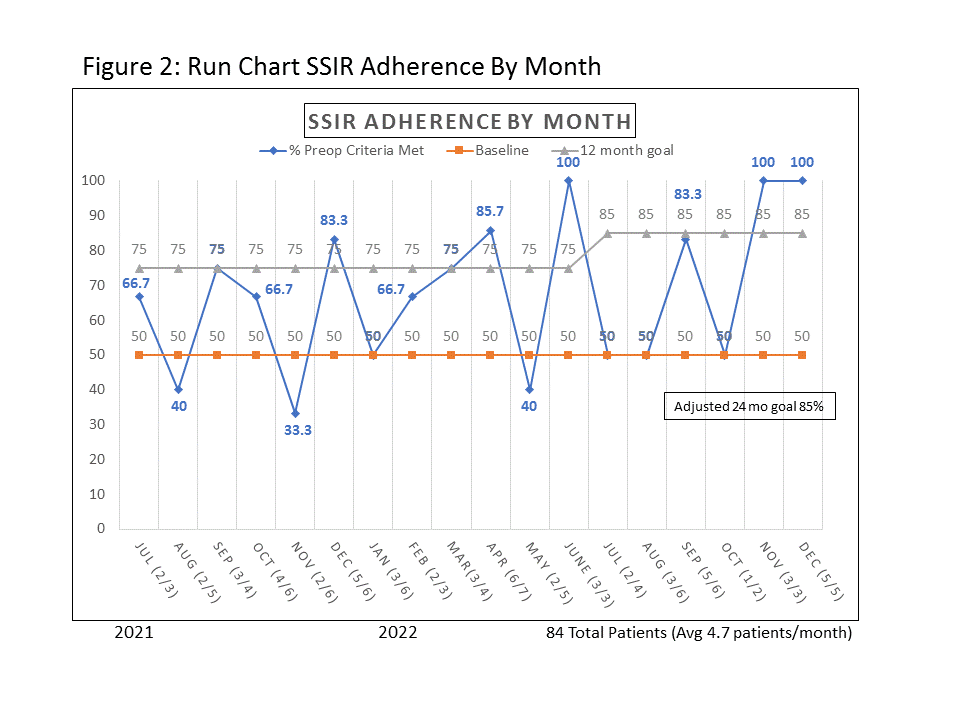Quality Improvement/Patient Safety: All Areas
QI 3: Subspecialty-specific QI & Patient Safety
710 - Outpatient Quality Improvement Design for Reduction of Pediatric Cardiothoracic Surgical Site Infections via Collaboration Across a Multi-state Tertiary Health System
Publication Number: 710.153
- NK
Nicole P. Klein, BSN, RN, CPN (she/her/hers)
Nurse Care Coordinator
Seattle Children's, Division of Cardiology
Seattle, Washington, United States
Presenting Author(s)
Background:
Pediatric cardiothoracic surgery (CTS) is regarded as “high risk” for surgical site infection. A preoperative surgical site infection reduction (SSIR) bundle includes bathing with chlorhexidine gluconate (CHG) for two consecutive days and twice daily nasal mupirocin (MUP) for five days prior to surgery. Standard and timely adoption of this bundle is challenged by site-specific limitations of our large referral area (four sites across Washington, Alaska, and Montana) with resulting practice variations.
Objective: The global aim of this QI project is to increase SSIR bundle compliance. We aimed to standardize the process and improve regional patients’ adherence with multi-disciplinary staff involvement, accurate and timely prescriptions, and enhanced patient education/support.
Design/Methods:
Non neonatal patients, requiring CTS, referred from our regional teams, were included. A multidisciplinary stakeholder team identified barriers to adherence and co-created a Key Driver Diagram (Fig 1) after analyzing each local process map to improve SSIR. The MUP prescription process was standardized across sites. CHG distribution was site-specific. Regional teams coordinated with families and tracked upcoming surgical dates, prescription adherence, and provided education. Regional nurses added a reminder call to families. SSIR bundle compliance was defined as preoperative treatment with both MUP and CHG as detailed above.
Results: From July 2021-December 2022 (18 months) 84 patients met inclusion criteria (average 4.7 pts/mo). Baseline adherence with the SSIR bundle was estimated at 50%. Post-intervention, quarterly adherence showed a significant positive trend over time (Spearman’s correlation coefficient, r=0.94, p=0.005) with quarterly rates of 58%, 61.1%, 61.5%, 73.3%, 62.5%, 90% respectively. Monthly adherence (Run Chart Fig 2) ranged from 33% to 100%. Timely MUP prescribing improved with 7 failures in the first 5 months, 5 in the second 9 months, and none in the last 4 months. Patients requiring translation services failed at a higher rate (5/13; 38.5% vs 22/71; 31%). Failure to complete the SSIR bundle was primarily due to delayed prescriptions, patient non-adherence, and surgical schedule changes.
Conclusion(s): SSIR is a multifaceted effort requiring a robust multi-disciplinary team approach. This SSIR QI project identified barriers, facilitated teamwork, created standardized practices, improved patient adherence, and augmented family education and resources. This model can be applied to similar patient challenges and organizational complexity. .gif)

